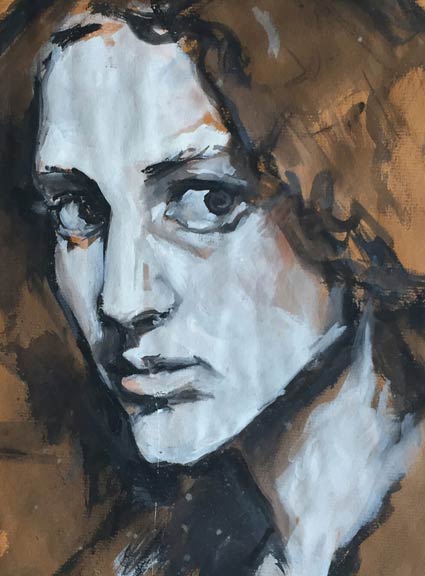
Seattle needs a Cultural Center like the one in Chicago. I have been saying this to anyone who will listen. Almost shouting it, really.
In the midwestern windy city, the Cultural Center is built in the old library that resides on Michigan Avenue in the heart of downtown. The building takes up half of a Chicago block with entrances on north and south. In a city known for its grand and historic architecture, the Cultural Center has multiple impressive Tiffany glass domes, lobbies lined with mosaics, and staircases that are somehow both intimate and grand. The building itself, set in a highly visited and visible location and with some historic significance as a designed structure, would be a draw in itself.

But, what is most impressive is what has been done to program the interior. With a momentum appropriate for a public library’s past, the Center is primed to display and encourage culture and discourse, is accessible from multiple directions, and is free and open to the public (with an information/security desk at each end). It houses ever-changing, and always compelling arrangements full of inhabitable inspiration. With a multitude of temporary exhibitions of various scales and attitudes, the spaces are always transforming, each seemingly organized within a particular cultural theme. Not only does the building have exhibits, but it also houses assembly places; a senior center; a concert/event area (with soaring ceilings, a glorious stained- glass dome, flexible seating, and a window that frames Gehry’s Millennium Park concert hall — i.e., Jay Pritzker Pavilion across the road); a large central lobby for sanctuary where anyone can rest among an array of changing art installments; a public lecture hall; etc. The rooms and hallways are varied and dynamic. It is a sensual treat to walk among them when they are empty, and it is exponentially uplifting when they are filled with art and displays.









It seems that almost any area of the building can be, and is used for exhibits. One exhibit area on the main floor is devoted to city planning. Two small galleries adjacent to this space sometimes expand the civic theme or show the work of individual, contemporary artists (usually activists with strong civic intentions and a high level of aesthetic ability). There is another changing exhibit space where there are often experimental interior and/or industrial designs as well as books and pamphlets for the taking. There might be a small exhibit about Chicago’s design history under the stairs. There is also a space lent to “Story Corps” (https://storycorps.org) where, with an appointment, people can open their hearts and minds to each other. There is a senior center near the north entrance that has its own exhibition space. The staircases are an experience unto themselves and, as you proceed along one you can view the interior courtyard where, for a time, there was a clever, contemporary, sculptural piece inspired by Piranesi.

Upstairs, galleries with tall ceilings and more expansive footprints have changing exhibits of the work of individual artists who are well-known or obscure, or of artist collectives, or exhibits on a theme. These larger galleries might, for a time, be filled with innovation from the city’s Architecture Biennial or about science and art. I have seen shows that interpret and exhibit the work of internationally known artists such as the innovative and riveting walking wind-powered sculptures of Theo Jansen (https://www.strandbeest.com), or the provocative local and highly acclaimed contemporary Theaster Gates (https://www.theastergates.com), or a collection of lesser-known Chicago painters and sculptors from the recent past (at least one of whom I have since seen exhibited in major museums), or an exhibit on the visible history of immigrants in Chicago… A hallway in this old building has a new ramp and a permanent artistic structure of brushed metal that, I think, may also function as a structural reinforcing. Nearby, connecting the north and south, there is another hallway where photographs are on display, often about the history of the city. The exterior wall facing an alleyway is also a canvas for art.








A stimulating lecture series is part of the program. We visit Chicago often and we almost always make a pilgrimage to the Cultural Center. One day, we wandered in and there was a poster announcing a talk by Hannah Beecher. In the intimate lecture hall, Ms. Beecher sat for an interview and candidly talked to the forty or so of us who had arrived. Ms. Beecher was the Production Designer for the movie “Black Panther” and Beyonce’s video “Lemonade”, among other extraordinary artistic endeavors. I was feet away from the stage, riveted to my seat by her astonishing personal, generous, and inspirational tale of creativity and redemption. This year, I saw her work at the Metropolitan Museum of Art in New York where she collaborated on an installation about what Seneca Village — a thriving African American settlement that had been displaced to build the MET and Central Park – might have been in an imagined future. On that day in Chicago, one of the most compelling speakers I have ever heard, Ms. Beecher, welcomed us in and made anything seem possible.



So I am inspired by this. Seattle needs a Cultural Center like the one in Chicago. I am proposing that the Macy’s Building is poised to be that place. The location and the scale of the building are the ideal setting. En route from downtown to the popular Pike’s Market, this structure is of a rare Art Deco style in a town not necessarily known for architectural history. The building is central and accessible from multiple sides. It is near transit and shopping, restaurants, and waterfront views. It denotes solidity and openness. And our city needs a cultural anchor, both for tourists/visitors and for those of us who reside longer. We need a conduit to fill and describe the important art, architecture, design, and cultural stories we must share to keep ourselves vibrant and alive. I propose that we study the great potential of a centralized civic space that celebrates our rich, diverse, impressive culture and that we put this plan into action right away as the city core needs us to do. We are a city, at long last, and not a provincial afterthought. We can act like it. Proud and expressive. Showing our smarts. Large and impressive. Open to the public. We all need it. Now.


